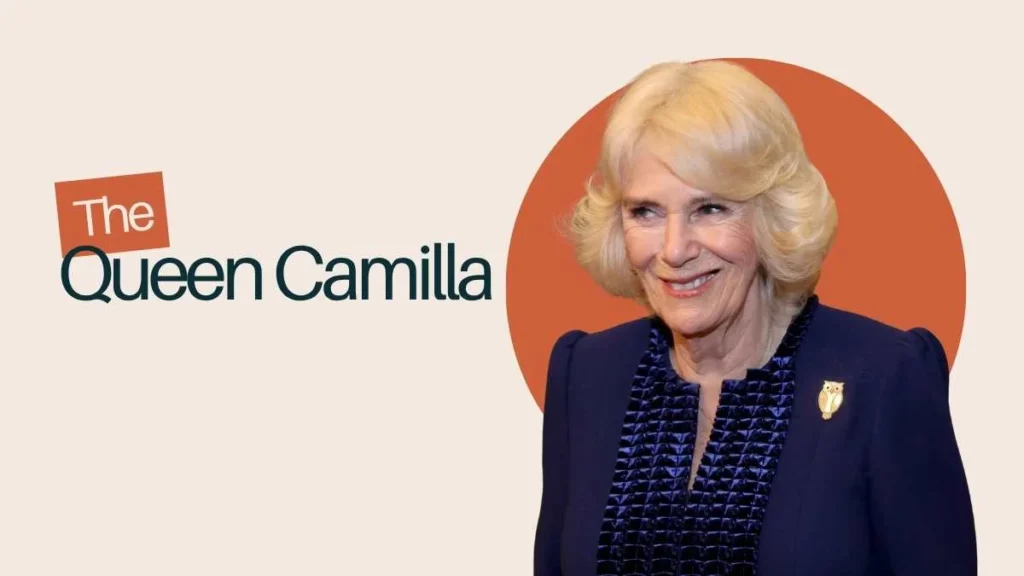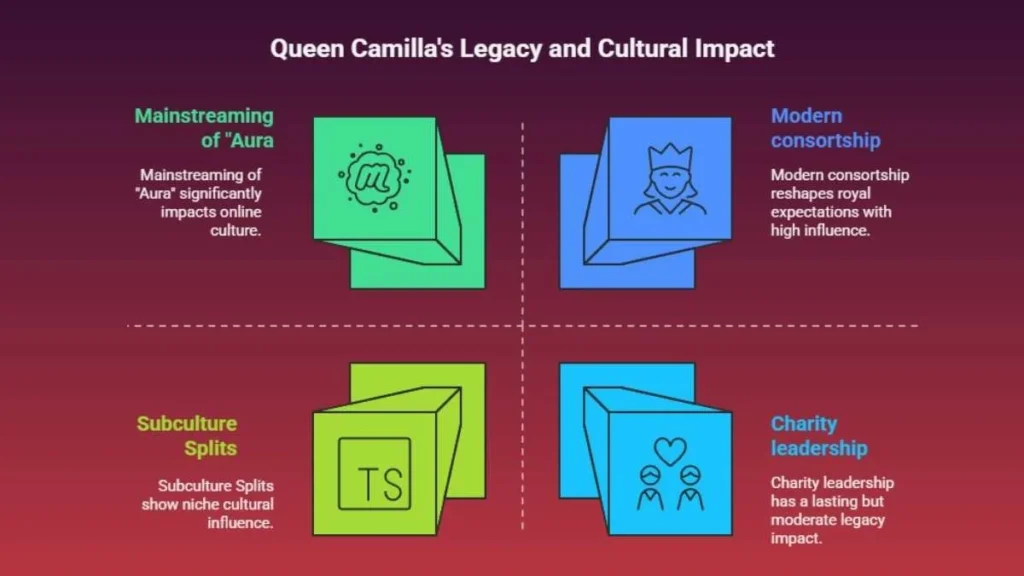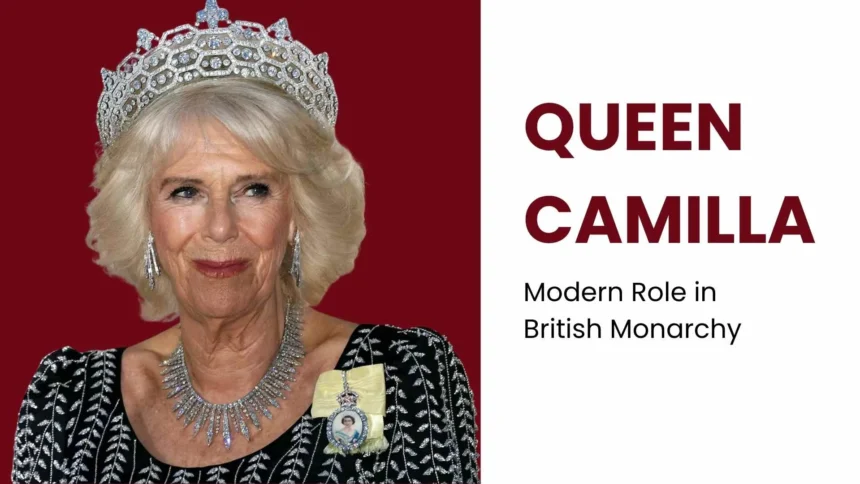Queen Camilla is the queen consort of the United Kingdom, wife of King Charles III, and one of the most discussed figures in modern monarchy. Her role is to support the King, represent the monarchy, and continue her decades-long work in charity, literacy, health awareness, and community welfare.
What is Queen Camilla? She is more than just a royal title; she is a consort who has overcome public scrutiny, rebuilt her reputation, and earned recognition through consistent service. From her early years as Camilla Shand to her coronation in 2023, her life reflects a powerful journey of resilience, evolution, and duty. Today, she embodies the monarchy’s balance between tradition and modern expectations.
Early Life, Family & Education
Camilla Rosemary Shand was born on 17 July 1947 at King’s College Hospital in London. Her parents, Major Bruce Shand and Rosalind Cubitt, raised her in both South Kensington and Sussex. The countryside life gave her a lasting love for horses and nature.
Educated at Queen’s Gate School in London, later in Switzerland, and Paris, she developed strong cultural exposure. A striking historical detail is her family connection to Alice Keppel, mistress of King Edward VII, which later drew public interest. These early roots shaped her awareness of aristocratic circles and laid the groundwork for her royal path.

Marriage, Scandal, and the Road to Acceptance
First marriage and Charles’ connection
In 1973, Camilla married British Army officer Andrew Parker Bowles, with whom she had two children, Tom and Laura. However, her close bond with Charles pre-dated this marriage. By the 1980s, their relationship became a matter of public speculation, sparking widespread criticism during Charles’s marriage to Princess Diana.
Divorce and gradual acceptance
Camilla and Andrew divorced in 1995. By then, public opinion of Camilla had been damaged. Yet, through quiet charitable work and low-profile appearances, she slowly changed her image. When she married Prince Charles in 2005, she chose the title Duchess of Cornwall instead of Princess of Wales, showing sensitivity to public feelings about Diana.
From Duchess to Queen Consort
Ascension and coronation
Following Queen Elizabeth II’s passing in September 2022, Charles became King and Camilla assumed the title of Queen Consort. Elizabeth herself had expressed her wish for Camilla to take this role, solidifying her legitimacy. On 6 May 2023, Camilla was crowned alongside Charles at Westminster Abbey, becoming Britain’s first new queen consort in decades.
Adapting traditions
Camilla modernized her position by replacing the traditional “ladies-in-waiting” with “Queen’s Companions.” This move lightened the ceremonial burden and made the role more accessible. Her duties now include supporting the King, representing the monarchy abroad, and continuing her charitable initiatives.
Major Patronages of Queen Camilla
| Cause Area | Example Patronages | Impact Focused On |
| Health & Osteoporosis | Royal Osteoporosis Society | Prevention, awareness, education |
| Domestic Abuse | Rape Crisis Centres, SafeLives | Survivor support & awareness |
| Literacy & Reading | The Queen’s Reading Room, BookTrust | Encouraging literacy & libraries |
| Animal Welfare | Battersea Dogs & Cats Home | Animal protection & adoption |
| Arts & Heritage | Royal Academy of Dance, cultural charities | Arts, education & well-being |
Balancing Royal Duty and Personal Life
Camilla has navigated her role by keeping a balance between visibility and privacy. Even during health challenges such as fatigue linked to illness in 2025, she continued public work where possible. This consistency built her reputation as dependable and resilient, qualities valued in a royal consort.
Her strategy avoids overexposure while ensuring meaningful impact. Rather than glamorous appearances, she is often seen in community visits, hospitals, and charities, earning quiet respect.
Public Perception and Media Evolution
Camilla’s journey is one of the most dramatic image transformations in royal history. From being criticized as the “other woman” to being accepted as queen consort, her path highlights how steady work and humility can reshape public opinion. Acceptance through service
- Her sensitive choice of titles minimized controversy.
- Her long-term dedication to survivors of abuse won empathy.
- Her coronation as Queen Consort signaled institutional acceptance.
While some critics remain, many now see her as a stabilizing influence and a supportive partner to King Charles.
Queen Camilla’s Legacy in the Making
Camilla’s influence is still unfolding, but several themes define her legacy:
- Modern consortship: She reshaped the expectations of a queen consort by balancing duty with modernization.
- Charity leadership: Her consistent involvement in health, literacy, and welfare causes ensures lasting community impact.
- Resilience: Her ability to recover from decades of criticism is an example of patience and reinvention.
- Support for the King: She has become an essential figure in ensuring continuity and stability during royal transitions.

FAQs
Q1: Does Queen Camilla have her own charitable foundation?
No, but she supports initiatives like The Queen’s Reading Room, which later became a charity.
Q2: What hobbies does Queen Camilla enjoy?
She is passionate about reading, gardening, horses, and animal welfare.
Q3: Will Camilla ever be a reigning monarch?
No, she is queen consort, not a sovereign ruler.
Conclusion
Queen Camilla’s story is a study in endurance, adaptability, and purpose. From controversy to coronation, she has navigated one of the most complex public journeys in modern monarchy.
Her influence lies not in grandeur but in persistence, modesty, and genuine care for social causes. As Britain’s queen consort, her legacy is steadily becoming one of service, resilience, and a quiet but profound impact on the monarchy’s evolution.








